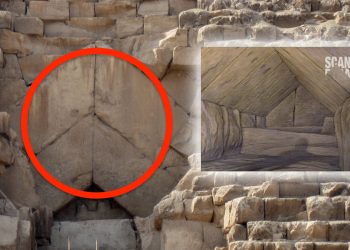The so-called Columbus lunar eclipse trick is one of history’s most fascinating examples of astronomy used for survival, when the famed explorer manipulated the moon to escape a desperate situation in the Caribbean. This true story blends science, strategy, and deception.
For thousands of years, civilizations have looked to the stars not just for meaning, but for practical guidance. Before modern technology, ancient mariners steered their ships by celestial bodies, navigating the vast unknown by reading the night sky like a map. One of the most extraordinary examples of this knowledge being put to use comes from Christopher Columbus, who once turned a lunar eclipse into a lifeline—outwitting an entire population and saving his stranded crew.
A desperate voyage ends in Jamaica
In 1502, on his fourth and final voyage across the Atlantic, Columbus set sail with four ships and a weary crew. The mission, plagued by storms and shipworms, quickly descended into a logistical nightmare. The wooden vessels deteriorated rapidly, and by mid-1503, only two ships remained seaworthy. Eventually, Columbus and his men found themselves marooned on the island of Jamaica—far from help and reliant on the goodwill of the island’s native inhabitants, the Arawak.
At first, the Arawak were welcoming. They brought food and supplies, intrigued by the foreigners and their towering ships. But as the months dragged on and no rescue arrived, goodwill gave way to frustration. By June of 1503, after nearly a year of support, the Arawak refused to continue providing aid. The situation was grim. Columbus, stranded with no working ships and a crew teetering on the edge of mutiny, needed a miracle.
The Columbus lunar eclipse trick takes shape
What Columbus had in his possession wasn’t magic—but it may have seemed like it. Among his supplies was an astronomical almanac authored by the German mathematician and astronomer Johannes Müller, also known as Regiomontanus. This almanac contained detailed predictions of lunar and solar eclipses. According to it, a total lunar eclipse would be visible in the Caribbean on the evening of February 29, 1504.
Seeing an opportunity, Columbus devised a bold plan. He summoned the local Arawak leaders and warned them that his God was displeased with their decision to stop helping his people. As a sign of divine anger, Columbus declared, the moon would soon turn red and disappear from the sky.
A night of fear and persuasion
When the night of the eclipse arrived, the moon gradually darkened, eventually taking on the deep red hue now commonly known as a “Blood Moon.” The sight terrified the Arawak. True to Columbus’ warning, the moon appeared to vanish in anger. Desperate and afraid of provoking the wrath of the explorers’ powerful deity, the Arawak leaders pleaded with Columbus to intervene.
He told them he would consult with his God to restore the moon’s light. Using an hourglass to keep track of the eclipse’s timing, Columbus waited until the total phase of the eclipse was nearly over. Then, he emerged from his tent and announced that his God was now satisfied and would restore the moon to its normal appearance.
Moments later, as predicted by the almanac, the moon reappeared in the sky.
Astronomy as survival
The Columbus lunar eclipse trick worked beyond all expectations. The Arawak resumed supplying food and assistance to Columbus and his crew. They survived on the island for several more months until rescue ships finally arrived in June 1504.
This event remains one of the most striking examples of how early knowledge of astronomy could be wielded as a form of power—and even used to manipulate entire societies. It’s a reminder that the night sky has never been just for wonder. In the hands of those who understood it, the stars and moon could become tools of persuasion, survival, and control.











